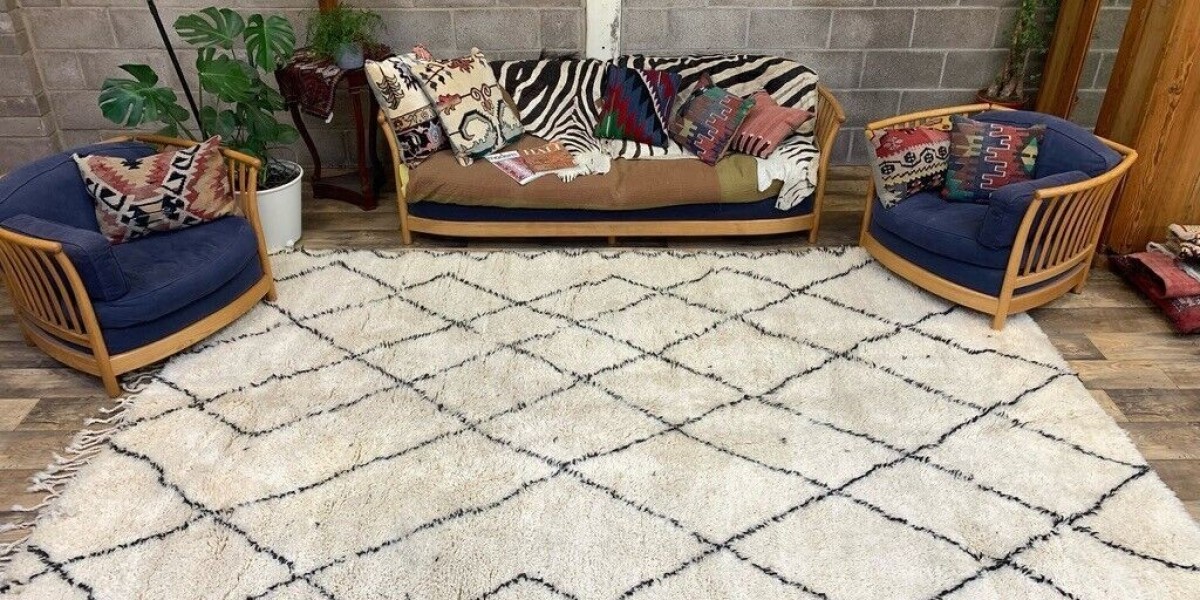Among the myriad of artisanal crafts that reflect the rich cultural heritage of Morocco, the Beni Ourain rug stands out as a symbol of both traditional craftsmanship and aesthetic elegance. Originating from the mountainous regions of Morocco, these rugs are renowned for their distinctive design and exceptional quality. This article explores the history, craftsmanship, and contemporary relevance of the Beni Ourain rug.
Historical Background
The Beni Ourain rugs are produced by the Beni Ourain, a Berber tribe from the Atlas Mountains of Morocco. These rugs are deeply embedded in the cultural and historical fabric of the region, with their origins tracing back several centuries. Traditionally, Beni Ourain women wove these rugs as a part of their daily lives, using them as blankets and floor coverings. Each rug tells a story of the weaver’s life, with patterns and symbols often reflecting personal and cultural significance.
Craftsmanship and Design
Beni Ourain rugs are renowned for their simple yet striking designs. They are typically made from high-quality, natural wool, which is valued for its warmth and durability. The wool is sheared from sheep that graze in the rugged terrain of the Atlas Mountains, and it is then spun and dyed using traditional methods.
The design of these rugs is characterized by a minimalist approach, featuring geometric patterns and abstract motifs. Common elements include diamond shapes, zigzag lines, and linear patterns. These designs are often created using a monochromatic color palette, primarily in shades of cream, white, and black. The simplicity of the patterns contrasts with the intricate weaving techniques employed, resulting in a rug that is both visually appealing and texturally rich.
Weaving Techniques
The process of making a Beni Ourain rug is labor-intensive and requires significant skill and patience. Traditional weaving involves using a horizontal loom, with each rug typically taking several weeks or even months to complete. The weaver knots each strand of wool by hand, a technique that ensures the durability and quality of the finished product.
One of the distinguishing features of Beni Ourain rugs is their high pile, which contributes to their softness and comfort. The pile is created by leaving the wool loops uncut, resulting in a plush, cushioned texture. This technique not only enhances the aesthetic appeal of the rug but also provides practical benefits, such as insulation and sound absorption.
Cultural Significance
Beyond their aesthetic value, Beni Ourain rugs hold cultural and symbolic significance. They are often used in traditional Berber ceremonies and rituals, and their patterns can convey various meanings related to fertility, protection, and identity. Each rug can be seen as a piece of living art, reflecting the individual and collective experiences of the weavers.
In addition, these rugs serve as a representation of Moroccan heritage and craftsmanship. They embody the values of traditional Berber society, including self-sufficiency and artisanal skill. The continued appreciation and demand for Beni Ourain rugs both locally and internationally help to preserve these ancient techniques and support the communities that produce them.
Contemporary Appeal
In recent years, Beni Ourain rugs have gained popularity in the global interior design market. Their versatile design and timeless appeal make them a sought-after choice for modern and eclectic home décor. Interior designers and homeowners alike are drawn to the rugs’ ability to blend seamlessly with a variety of styles, from contemporary minimalist to bohemian chic.
The increasing interest in sustainable and handcrafted products has further boosted the appeal of Beni Ourain rugs. As consumers become more conscious of the environmental and ethical implications of their purchases, the authentic and artisanal nature of these rugs aligns with a growing preference for responsibly made goods.
Conclusion
The Beni Ourain rug is more than just a decorative item; it is a testament to the enduring legacy of Moroccan craftsmanship and cultural heritage. Its distinctive design, rich history, and contemporary relevance make it a cherished piece that bridges the past and present. Whether used as a functional textile or a statement piece in interior design, the Beni Ourain rug continues to captivate and inspire, celebrating the artistry and tradition of the Berber people.



